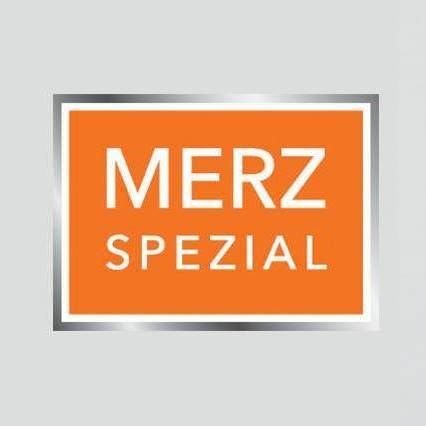预约演示
更新于:2025-05-07
Forehead lines
额头皱纹
更新于:2025-05-07
基本信息
别名 额前纹 |
简介- |
关联
5
项与 额头皱纹 相关的药物靶点 |
作用机制 SNAP25 抑制剂 |
在研机构 |
最高研发阶段批准上市 |
首次获批国家/地区 美国 |
首次获批日期2022-09-07 |
靶点 |
作用机制 SNAP25 抑制剂 |
最高研发阶段批准上市 |
首次获批国家/地区 奥地利 [+29] |
首次获批日期2007-10-24 |
靶点 |
作用机制 SNAP25 抑制剂 |
在研机构 |
原研机构 |
非在研适应症 |
最高研发阶段批准上市 |
首次获批国家/地区 中国 |
首次获批日期1997-01-01 |
20
项与 额头皱纹 相关的临床试验NCT06794866
A Phase 3, Multicenter, Randomized, Double-Blinded, Placebo-Controlled Study to Evaluate the Safety and Efficacy of OnabotulinumtoxinA Purified Neurotoxin Complex for the Treatment of Moderate to Severe Forehead Lines in Japan
Facial lines that develop from repeated facial expression, such as forehead lines (FHL), are typically treated by selectively weakening specific muscles with small quantities of botulinum toxin. The purpose of this study is to assess adverse events and effectiveness of onabotulinumtoxinA in Japanese adults with moderate to severe FHL.
Participants are placed in 1 of 4 groups, called treatment arms. Each group receives a different treatment. Participants are randomly assigned to receive onabotulinumtoxinA or placebo. There is a 1 in 5 chance that a participant will receive placebo. Around 150 adult participants with moderate to severe FHL will be enrolled in the study in approximately 15 sites in Japan.
In Period 1, participants will receive intramuscular injections on Day 1. In Period 2, participants will receive up to 3 additional treatment cycles. Participants will be followed for up to 12 months.
There may be higher treatment burden for participants in this trial compared to their standard of care. Participants will attend regular visits during the study at the study site. The effect of the treatment will be checked by medical assessments, checking for side effects and completing questionnaires.
Participants are placed in 1 of 4 groups, called treatment arms. Each group receives a different treatment. Participants are randomly assigned to receive onabotulinumtoxinA or placebo. There is a 1 in 5 chance that a participant will receive placebo. Around 150 adult participants with moderate to severe FHL will be enrolled in the study in approximately 15 sites in Japan.
In Period 1, participants will receive intramuscular injections on Day 1. In Period 2, participants will receive up to 3 additional treatment cycles. Participants will be followed for up to 12 months.
There may be higher treatment burden for participants in this trial compared to their standard of care. Participants will attend regular visits during the study at the study site. The effect of the treatment will be checked by medical assessments, checking for side effects and completing questionnaires.
开始日期2025-01-22 |
申办/合作机构 |
CTIS2024-512349-17-00
A prospective, randomized, evaluator- and subject blinded, multi-center investigation to assess efficacy and safety of three different dosages of the same injection pattern of LetibotulinumtoxinA in the treatment of moderate and severe horizontal forehead lines - CPH-LET01
开始日期2024-11-06 |
申办/合作机构 |
NCT05894109
Efficacy of Zinc Supplementation on Botox Treated Forehead Rhytids
The current literature suggests that zinc supplementation may increase the duration of botulinum toxin; however, each study had their limitations. Further, no one has studied the effect of zinc supplementation for botulinum toxin treatment of the forehead. The purpose of this study is to evaluate the effect of zinc supplementation on frontalis muscle denervation by objectively assessing the degree of forehead rhytids and movement of the eyebrows.
开始日期2024-08-01 |
申办/合作机构 |
100 项与 额头皱纹 相关的临床结果
登录后查看更多信息
100 项与 额头皱纹 相关的转化医学
登录后查看更多信息
0 项与 额头皱纹 相关的专利(医药)
登录后查看更多信息
92
项与 额头皱纹 相关的文献(医药)2024-11-01·Ophthalmic Plastic & Reconstructive Surgery
A Case of Malignant Transformation of an Orbital Epidermoid Cyst to Cystic Squamous Cell Carcinoma
Article
作者: Wang, Qiancheng ; Lucarelli, Mark J. ; Vander Zee, Brandon ; Downie, Elaine M. ; Potter, Heather A. ; Duncan, Nicole B. ; Sterner, Robert C.
2024-07-01·Aesthetic Plastic Surgery
Clinical Outcomes of Utilizing a "W"-shaped Incision in the Management of Forehead Skin Thickening Induced by Hypertrophic Osteoarthropathy
Article
作者: Guan, Yuanyuan ; Deng, Huiling ; Wang, Jiecong ; Dong, Quping
2024-02-01·Facial Plastic Surgery & Aesthetic Medicine
Frontal Osteomyelitis and Sinusitis Complication After Type III Frontal Bone Cranioplasty for Facial Feminization
Article
作者: Shrout, Max A ; Howard, Brittany E ; Brown, Adam E
分析
对领域进行一次全面的分析。
登录
或

生物医药百科问答
全新生物医药AI Agent 覆盖科研全链路,让突破性发现快人一步
立即开始免费试用!
智慧芽新药情报库是智慧芽专为生命科学人士构建的基于AI的创新药情报平台,助您全方位提升您的研发与决策效率。
立即开始数据试用!
智慧芽新药库数据也通过智慧芽数据服务平台,以API或者数据包形式对外开放,助您更加充分利用智慧芽新药情报信息。
生物序列数据库
生物药研发创新
免费使用
化学结构数据库
小分子化药研发创新
免费使用





